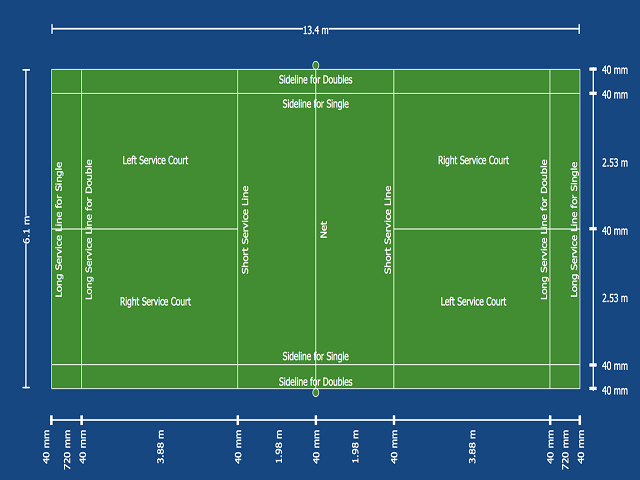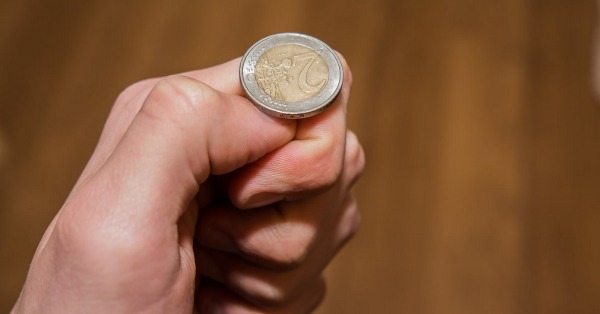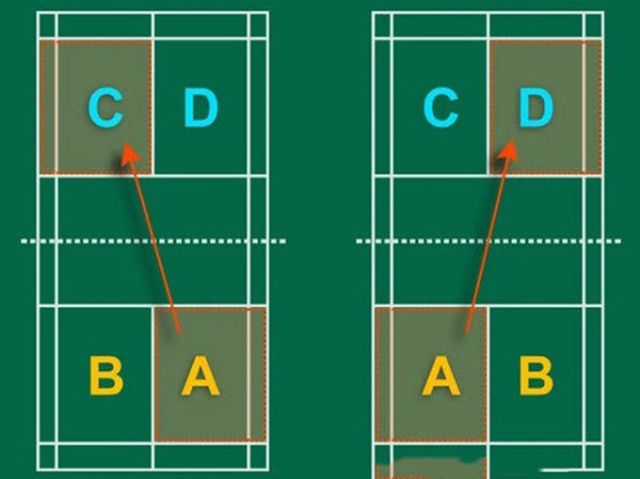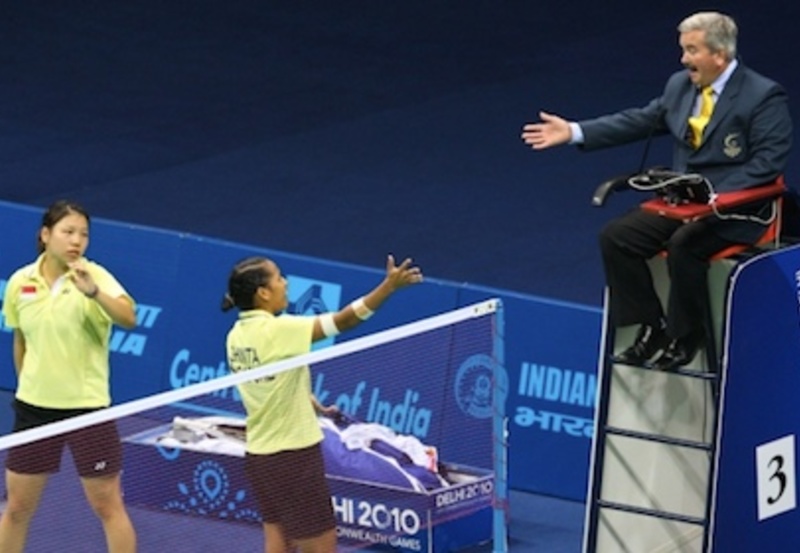Top 10 sports that burn the most calories
13 Feb, 2023Top 10 sports that burn the most calories
07 Feb, 2023 - Tournaments
8 Latest Singles Badminton Laws You Need To Master
The rules of badminton singles are very important for singles enthusiasts, especially those who are new to the game. In addition to the attempts to score points or the lucky shots, you need to avoid situations where you lose points because you do not know the rules of singles badminton.
Singles badminton court size

Badminton World Federation - BWF regulates the standard badminton court size as follows:
Length: 13.4m
Width: 5.18m
Diagonal length: 14.3m
There are also some general standards of badminton courts before putting them into practice and competition:
The boundary lines, the goal line are drawn with easy-to-see white or yellow paint, prominent on the blue or red ground, the width of the line is 40mm (4cm).
The height of the grid column is 1m55 at the ends of the column and the overlap in the middle of the grid with the height in the middle of the grid is 1m524. This height will be fixed for all events. The post of the badminton net is placed from the outer edge of the outermost goal line, not over the line.
Singles badminton rules: Procedures before the start of the match

In the rules of singles badminton, to determine who is the first server normally in international tournaments will use a coin with 2 sides corresponding to the choice of 2 Athletes to divide 2 things:
Firstly: The playing field is quite important, because many ground surfaces are not up to standard, wind direction and light direction greatly affect the athletes.
Second: Who will serve first, usually the first to serve will be more profitable, and after a winning set, the winner will win the right to serve in the next set.
Rules of badminton singles: Serve
Position, service range

The singles badminton rule stipulates that the range of service and reception is limited by the short service line, the center line dividing the two sides of the court, the long service line (the outermost horizontal line of the court) and the goal line. along the inside of the pitch.
The BWF permits a service position in singles to be anywhere within the service range bounded by the lines indicated above. However, usually the athletes stand at the corner of the intersection between the short service line and the center line dividing the two halves of the court on the same side.
Order of serve
To start a singles badminton match, the player's right side of the court is always defined as the blocking court and will serve from point 0 to the opponent's crosscourt. The two sides will play back and forth within the area of the badminton court specified in the singles badminton rules until the shuttle is no longer in play.
If you win a point, continue to serve from the next box (ie the odd box on the left).
If the opponent wins a point, the service will be served from the next box. Just like that, the even point will serve the even box, and the odd point will serve from the odd square.
Valid serves
The server's feet must be in contact with the court, not stepping on the line before the shuttle hits the racket and flies away.
Both sides are ready, neither side has any delay, when the receiver is not ready, the server must not hit the shuttle until the opponent is in a ready position.
The point of contact between the shuttlecock and the racket is less than or equal to the player's waist and the serving height is 1.15m according to the latest badminton rules.
When the shuttlecock and the racquet face contact, the racquet body must face down.
Since the racket is brought behind the shuttle for service, any delay in serving is considered invalid and points are forfeited.
Invalid serves
The service shuttle hits the net into the opponent's court but is not in the valid service box.
The point of contact of the racquet and the shuttlecock is higher than the waist or 1.15m higher.
The shuttlecock touches any other part of the player's body, however touching the racket frame, shaft or handle without touching the hands and body is still considered legal.
Delaying the service after the racket moves behind the shuttlecock, or enticing the racket when serving is illegal.
Singles badminton rule: Return of serve
Location, service return range
The rules of badminton singles stipulate that the returnee position is anywhere within the limits of the above lines, without stepping on the line before the shuttlecock touches the opponent's racket.
The scope of the return service in singles is the entire limit of the court from the center line separating the two sides of the court, the bottom line and the two inside lines. A return of service is valid when the point where the shuttle lands is within that limit or on the lines.
Order of service return
In the singles badminton rule, you are allowed to return service at any position in the court specified for singles and not to step on the line until the shuttle has touched the server's racket.
The opponent with an even point will stand to return the service on the even box and the other person, and so on until you get a point, will stand on the even or odd box corresponding to the number of points you have.
Valid serve returns
The return shuttle is within the area of the singles court specified in the latest singles badminton law.
The point where the ball falls within or above the line is considered a good ball phase.
Return serve overturned net through the opponent's half is a valid goal.
Invalid serve returns
The feet do not touch the court before the shuttlecock touches the racket of the serving opponent.
Move your body, racket face before the shuttlecock touches the server's racket.
Footsteps on the line in preparation to receive service.
There is a delay in action when the shuttle has touched the server's racket.
How to calculate points in singles
In the singles badminton rules, the scoring in singles play is as follows: the starting point is 0-0, the serving side starts from the right box according to its part of the court and the receiver also stands in the right box according to the rules of badminton. own portion of the court (2 sections of the court that cross each other).
When the server wins in his service, he will continue to serve according to the parity point in the corresponding service box (even point serve on the right, odd point serve on the left).
Conversely, when the receiver of the service scores a point, he will win the right to serve immediately after with the corresponding odd number of points at the even or odd court position according to the number of points available.
The winner after a set is the player who scores 21 and is at least 2 points away from the opponent (Example 21-19). In case the score is 20-20, continue to play until the difference is 2 points (eg 22-20, 23-21...)
In the case of a score of 29-29, whoever gets to 31 first will be the winner.
Singles badminton rules: Regulations on changing courts
The singles badminton law stipulates that the two sides will change courts in the following cases:
1.End each round.
2.At the end of the second half with an even score of 1, both sides will continue to change courts to play the 3rd set.
3.When one of the two athletes reaches 11 points in the third set, the two sides will continue to change courts.
4.A rather rare case is when the end of each half and the two sides have not changed courts, whenever the referee remembers and the ball dies, the pitch will be changed and the result of the previous match will be kept and continued. continue playing after the pitch is changed.
Singles badminton rule: Rest time during and after each set of matches.

According to the rules of badminton singles, the rest time during and after each set is as follows:
In the set when one of the two sides reaches 11 points, the rest time is not more than 60 seconds.
The rest time after each round of badminton singles matches is not more than 2 minutes between the 1st, 2nd and 3rd rounds.
In addition, there are exceptions that must be stopped by the referee's decision such as: the net post is off, the yard is not up to the competition standards, injured athletes need the support of the medical team ...
Rules of Badminton Singles: Cruel acts and disqualification.
1.The rules of badminton singles do not allow athletes to make provocative words or actions to delay the match.
2.Deliberately using impact to affect the ball such as breaking the shuttlecock, deliberately crushing the shuttlecock, etc.
3.There are insults to the referee, the opponent and the audience.
4.All sanctioning decisions are final decisions by the referee according to the rules of singles badminton.
5.Depending on the severity of the violation, the referee will issue a corresponding warning, 2 warnings will be counted as one error.
6.If there are many fouls and seriousness, the referee will consult the referee and may disqualify the athlete if necessary.
Singles badminton rules: The role of the referee

Conduct the match according to the current badminton rules.
Make the final decision when there is a dispute or complaint from both players.
Ensure clear and transparent information about matches and scores for players and spectators.
Have the right to replace the line referee after consulting the arbitration team.
Timely decision making in situations before the next bridge phase.